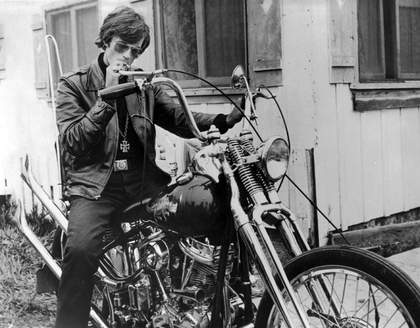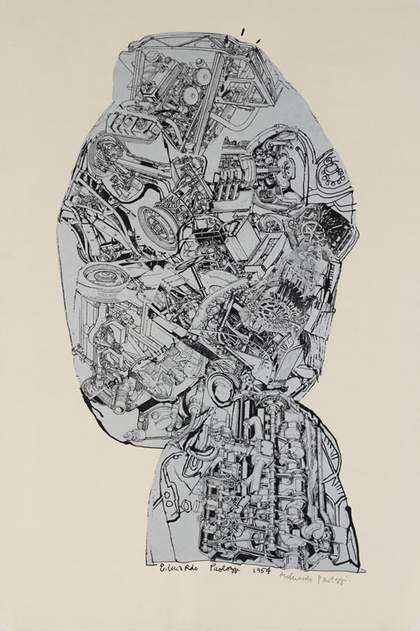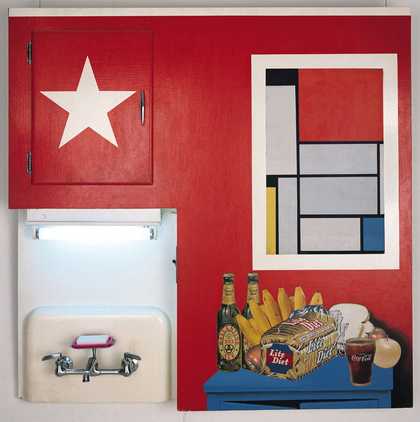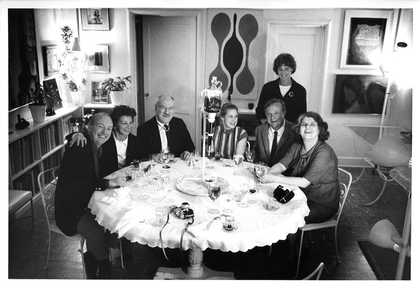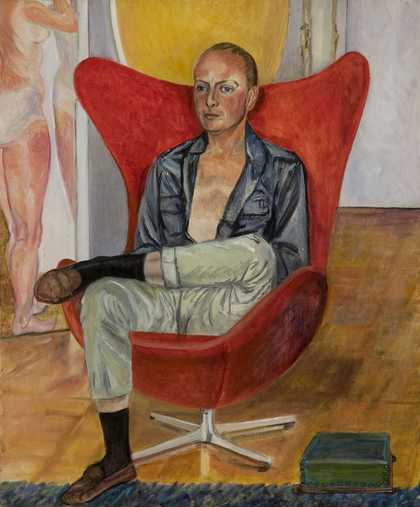Abstracts
Lucy Bradnock
Criticism at the Frontier: Lawrence Alloway at the Movies
This presentation concerns the crucial role that Lawrence Alloway’s writing on film played in the formation of his critical position. While Alloway’s most notable contribution to the discipline of film studies came in a screening he organised for the Museum of Modern Art, New York, in 1969 and the subsequent 1971 publication Violent America: The Movies, 1946–1964, his interest in film started much earlier. This paper therefore considers a number of these early instances of film writing, including the correspondence he exchanged with Sylvia Sleigh between 1948 and 1954; his 1951 notes for an unpublished book on film; a small number of published articles and opinions pieces, and a greater number that remained unpublished; and broadcasts that he made for the BBC Third Programme between 1955 and 1962. I argue that these early attempts to find a critical language with which to describe the movies reveal that Alloway’s engagement with film and its criticism was fundamental to the formation of his broader critical position in the 1950s and beyond. Thus Alloway’s attempts to work through the methodological complexities of writing on film also allowed him the means by which to open up new possibilities for art criticism and writing art history.
Helle Brøns
Abstraction and Popular Culture. Asger Jorn and Lawrence Alloway. Between Cold War and Science Fiction
Alloway met the Danish artist Asger Jorn in 1957 through British artist Ralph Rumney who was the connecting link between Jorn’s Situationist International and Alloway’s Independent Group. In the years that followed Alloway arranged several solo and group exhibitions with Jorn and wrote a number of essays about his work. The two of them shared the ambition to break the modernist autonomous conception of art and to broaden the horizon of meanings out into the popular culture. However, both were still very concerned with the formal problems of expressionist and abstract painting. Jorn juggled the tensions between expressionist painting, popular inspiration and political impetus in his writing and painting, embracing science fiction imagery and folk art. My paper introduces some central issues in Jorn’s work during the Cold War and discusses how Alloway’s and Jorn’s thoughts on folk art, popular culture and pop art relate. Which aspects of Jorn’s work does Alloway address in his writing – and which ones are missing? As a Jorn scholar my interest in Alloway comes from the important role he played as a discussion partner, critic and curator for Jorn at the moment of his international breakthrough.
Alex Coles
‘Curating: Then and Now’ Revisited
The presentation reflects on the discourse that Lawrence Alloway’s article ‘Network: The Artworld Described as a System’ (Artforum, September 1972) has accrued since the author’s own article ‘Curating: Then and Now’ (Art Monthly, March 2004) by focusing on two aspects of Alloway’s systems thinking: the role he accords the artist’s studio and the interface between art, design and architecture.
Jennifer Mundy
Teaching Criticism
Lawrence Alloway worked as a professor at the State University of New York at Stony Brook from 1969 to 1981 when ill health forced him to resign. It was the longest job he had held, and yet very little has been written or is known about his activities as a teacher and their possible impact on his understanding of his role as a critic. This presentation will describe Alloway’s public engagement with the function and state of art criticism in the 1970s, while exploring connections with his teaching and his changing views of art history.
Lucy Steeds
Lawrence Alloway’s Early Role in the Writing of Exhibition Histories
This paper explores Alloway’s published work as a model for the writing of exhibition histories. Presented in two parts, the first considers how he wrote particular exhibitions of the 1950s, involving Richard Hamilton and Victor Pasmore, into history. Here questions are raised concerning, for instance, his relationship to continental European writing on exhibition design. Secondly, his book on the Venice Biennale of 1969 is set within the context of those few dedicated to critical and historical reflection on public shows of recent art. His anticipation of the increasingly established field of Exhibition Histories is examined, with some of his contentions being developed in order to set out the contemporary possibilities for this field.
Speakers’ biographies
Lucy Bradnock
Lucy Bradnock is a lecturer in modern and contemporary art history at the University of Nottingham. Previously she was a research fellow at the Getty Research Institute. Lucy completed her PhD, titled ‘After Artaud: Art in America, 1949–1965’, at the University of Essex in 2010, following a BA and MA at the Courtauld Institute of Art, London. She has published on the work of John Cage, Wallace Berman, and Nancy Spero, the curatorial practices of Walter Hopps, and art in Los Angeles during the 1950s and 1960s. Her research on Lawrence Alloway stems from an interest in post-war American art and visual culture and the intersection of film and art histories. She is a co-editor with Courtney J. Martin and Rebecca Peabody of a collected volume of essays on Lawrence Alloway (Getty Publications, 2015).
Helle Brøns
Helle Brøns is a Danish art historian and PhD Fellow at Statens Musem for Kunst, Museum Jorn and the University of Copenhagen. Currently working on a project on notions of gender, matter and popular culture in Asger Jorn’s work, she has published a book and several articles on Asger Jorn and essays on Sophie Calle, Tove Storch, Peter Doig and painting in the expanded field. She previously worked at Overgaden Institute of Contemporary Art and at the Danish Arts Agency. Selected publications include: ‘Masculine Resistance. Expressions and Experiences of Gender in the Work of Asger Jorn’, October, no.141, Summer 2012; ‘The Shock of the Old’, in Hvad Skovsøen gemte, Jorn’s Modifications & Kirkeby’s Overpaintings, Museum Jorn, 2011; Asger Jorn, Louisiana Museum of Modern Art, 2009.
Alex Coles
Alex Coles is Professor of Transdisciplinary Studies at the School of Art, Design and Architecture at the University of Huddersfield. He is the author of DesignArt (Tate Publishing, 2005) and The Transdisciplinary Studio (Sternberg Press, 2012), and is editor of Design and Art (MIT/Whitechapel, 2007) and EP Vol.1, The Italian Avant-Garde: 1968–1976 (Sternberg Press, 2013).
Courtney Martin
Courtney Martin is assistant professor of modern and contemporary art in the History of Art and Architecture department at Brown University. She received a doctorate from Yale University in 2009 for her research on twentieth-century British art and architecture. She is the author of lengthy essays on the work of many contemporary artists, including Rasheed Araeen, Kader Attia, Rina Banerjee, Frank Bowling, Wangechi Mutu, Ed Ruscha and Yinka Shonibare. In 2012 she curated a focus display of Bowling’s painting at Tate Britain. She is currently working on a manuscript about Araeen and British art and politics after 1968. Prior to her appointment at Brown she was an assistant professor in the History of Art department at Vanderbilt University; a Chancellor’s Postdoctoral Fellow in the History of Art at the University of California at Berkeley (2009–10); a fellow at the Getty Research Institute (2008–9); and a Henry Moore Institute Research Fellow (2007). She also worked in the media, arts, and culture unit of the Ford Foundation inNew York. She is co-leading a multi-year research project on the critic Lawrence Alloway at the Getty Research Institute.
Jennifer Mundy
Jennifer Mundy is Head of Collection Research at Tate. She has curated several exhibitions at Tate, including Surrealism: Desire Unbound (2001) and Duchamp, Man Ray, Picabia (2008), and has published widely on twentieth-century art. She is editor of Tate’s online research journal, Tate Papers, and has edited a number of online research publications at Tate, including The Camden Town Group in Context (2012). She is currently editing a volume of Man Ray’s writings on art for Getty Publishing and contributing to the volume on Lawrence Alloway edited by Lucy Bradnock, Courtney J. Martin and Rebecca Peabody, also for Getty Publishing.
Lucy Steeds
Lucy Steeds is currently working on a book titled ‘Exhibitions for the Documents of Contemporary Art series’ (Whitechapel Gallery and The MIT Press, 2014). As lead author for a recent publication offering critical reappraisal of the 1989 Paris exhibition Magiciens de la terre (Making Art Global, Part 2, Afterall 2013), she provides an extended examination of the show’s context and choices, while arguing that the show may be seen as an inadvertent model for transnational and project-based curating in the ensuing era of neo-liberal globalisation. Lucy is Editor of Afterall’s Exhibition Histories series and co-Pathway Leader for MRes Art: Exhibition Studies at Central Saint Martins College of Art and Design, University of the Arts London. She has a background in exhibition making and publishing in the field of contemporary art having worked at Arnolfini in Bristol and her previous teaching experience includes lecturing in art history and theory at the Ruskin School of Art, Oxford. She has a doctoral degree in Cultural Studies from Goldsmiths College, London.
Participants
Karen Alexander, Senior Tutor, Curating Contemporary Art, Royal College of Art
Lucy Bradnock, Lecturer in Modern and Contemporary Art History, University of Nottingham
Andrew Brighton, Contributing Editor for Critical Quarterly and art writer
Helle Brøns, PhD Fellow, Statens Museum for Kunst, Museum Jorn and the University of Copenhagen
Alex Coles, Professor of Transdisciplinary Studies at the School of Art, Design and Architecture, University of Huddersfield
Elena Crippa, Curator, Modern British Art, Tate Britain
Penelope Curtis, Director, Tate Britain
Christopher Griffin, Collection Research Manager, Tate
Martin Hammer, Professor of History and Philosophy of Art, University of Kent
David Hodge, PhD candidate, University of Essex
Anders Kold, Curator, Louisiana Museum of Modern Art
Courtney J. Martin, Assistant Professor of Modern and Contemporary Art History, Brown University
Henry Meyric Hughes, curator, consultant and writer on art
Jennifer Mundy, Head of Collection Research, Tate
Tom Overton, researcher
Joy Sleeman, Senior Lecturer, Slade School of Fine Art
Lucy Steeds, Editor of Afterall’s Exhibition Histories series and Co-Pathway Leader for MRes Art: Exhibition Studies at Central Saint Martins College of Art and Design, University of the Arts London
Steve Swindells, Professor in Creative Practice and Director of Research and Director of Graduate Education
Sarah Thornton, writer and sociologist
Lisa Tickner, Visiting Professor, Courtauld Institute of Art
Victoria Walsh, Head of Curating Contemporary Art, Royal College of Art

